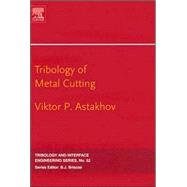
What is included with this book?
| Preface | p. ix |
| Generalized Model of Chip Formation | p. 1 |
| Introduction | p. 1 |
| Inadequacy of the Single-Shear Plane Model | p. 2 |
| What is the Model of Chip Formation? | p. 21 |
| System Concept in Metal Cutting | p. 23 |
| Generalized Model of Chip Formation | p. 23 |
| Influence of Cutting Speed | p. 43 |
| Formation of Saw-Toothed Chip | p. 48 |
| Frequency of Chip Formation | p. 53 |
| Formation of the Segmental Saw-Toothed Chip | p. 55 |
| Applicability and Significance of Chip Formation Models | p. 60 |
| References | p. 62 |
| Energy Partition in the Cutting System | p. 69 |
| Introduction | p. 69 |
| Energy Flows in the Cutting System | p. 70 |
| Physical Efficiency of the Cutting System | p. 73 |
| Determination of the Work of Plastic Deformation in Metal Cutting | p. 76 |
| Practical Analysis of the Physical Efficiency of the Cutting System | p. 91 |
| Energy Balance of the Cutting System | p. 94 |
| Methods of Improving Physical Efficiency of the Cutting System | p. 98 |
| References | p. 120 |
| Tribology of the Tool-Chip and Tool-Workpiece Interfaces | p. 124 |
| Introduction | p. 124 |
| Tool-Chip Interface | p. 125 |
| Tool-Workpiece Interface | p. 177 |
| Temperature at the Interfaces | p. 189 |
| References | p. 211 |
| Cutting Tool Wear, Tool Life and Cutting Tool Physical Resource | p. 220 |
| Introduction | p. 220 |
| Known Approaches | p. 221 |
| Proper Assessment of Tool Wear | p. 224 |
| Optimal Cutting Temperature - The First Metal Cutting Law | p. 227 |
| Influence of Cutting Feed and Depth of Cut | p. 239 |
| Influence of Tool Geometry | p. 245 |
| Influence of Workpiece Diameter | p. 248 |
| Plastic Lowering of the Cutting Edge | p. 254 |
| Resource of the Cutting Wedge | p. 269 |
| References | p. 274 |
| Design of Experiments in Metal Cutting Tests | p. 276 |
| Introduction | p. 276 |
| DOE in Machining: Terminology and Requirements | p. 277 |
| Screening Test | p. 281 |
| 2k Factorial Experiment, Complete Block | p. 294 |
| Group Method of Data Handling | p. 307 |
| References | p. 323 |
| Improvements of Tribological Conditions | p. 326 |
| Cutting Fluids (Coolants) | p. 327 |
| Coatings | p. 372 |
| Improving Tribological Conditions by Modification of Properties of the Work Material | p. 379 |
| References | p. 386 |
| Basics, Definitions and Cutting Tool Geometry | p. 391 |
| Basic Terms and Definitions | p. 391 |
| Reference Planes | p. 394 |
| Angles: Definitions | p. 396 |
| Determination of Uncut Chip Thickness for a General Case | p. 410 |
| References | p. 413 |
| Experimental Determination of the Chip Compression Ratio (CCR) | p. 414 |
| General Experimental Techniques | p. 414 |
| Design of Experiment | p. 416 |
| Index | p. 419 |
| Table of Contents provided by Ingram. All Rights Reserved. |
The New copy of this book will include any supplemental materials advertised. Please check the title of the book to determine if it should include any access cards, study guides, lab manuals, CDs, etc.
The Used, Rental and eBook copies of this book are not guaranteed to include any supplemental materials. Typically, only the book itself is included. This is true even if the title states it includes any access cards, study guides, lab manuals, CDs, etc.